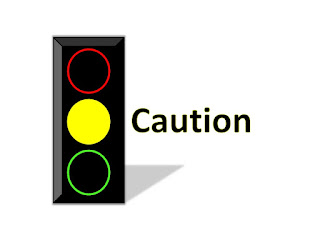Cyanos Activity August 11, 2020
Reconsider activities and limit exposure to the water.
Disclaimer: The information presented below reflects conditions throughout the lake and may differ from conditions on specific shorelines. For information regarding beach closings please contact the Torrington Area Health District or local town officials.
On Tuesday, August 11th
, AER visited Bantam Lake to conduct biweekly Cyanobacteria
monitoring and to perform monthly water quality monitoring. Water column profile
data, total depth measurements, and Secchi transparency data were collected from the
North Bay Site (N 41.71087° W -73.21155°), the Center Lake Site (N 41.70056° W -
73.22102°), a site west of Folly Point (N 41.70773 W -73.22638), and at a site in the
South Bay region of the lake (N 41.69015 W -73.22728).
A 500mL composite sample of the top three meters of water column was collected for
algae counts at the North Bay and Center Lake Sites using a three-meter long sampling tube. Due to reports of a visible surface bloom or scum several days earlier along
the eastern shoreline, in the general proximity of the Center Lake Site, an additional
sample was collected there for cell counts. All samples were preserved with Lugol’s
solution shortly after collection and stored at 3°C. Sample preparations did not include
concentration of whole water samples since those samples appeared to have sufficient cell concentrations to count without any additional processing. Counting methods were undertaken as described in earlier memos.
Additionally, a concentrated plankton tow sample, which was obtained using a 10µm
mesh net was collected at the Center Lake site. The concentrated plankton sample
was transferred into a 25mL glass amber bottle, stored at 3°C, and preserved with
Lugols after an examination with microscopy.
Secchi transparency measurements on August 11th were closely grouped and were between 1.98 and 2.08m (Table 1, Fig. 1). Average Lake Secchi transparency on August 11th
was nearly identical to that on July 27th
. Only the average Secchi transparency during
the June 1st bloom was lower than the averages on July 27th and August 11th (Fig. 1)
Relative concentration of phycocyanin, which is the signature photosynthetic pigment
of Cyanobacteria, was measured in situ with a fluorimeter; those data suggest that
concentrations have not appreciably changed over the last two weeks at each individual site and on a lake-averaged basis. Concentrations over the last several weeks are
only exceeded by the relative concentration during the June 1st bloom (Fig. 2).
The August 11th Cyanobacteria cell concentrations at the North Bay and Center Lake
Sites that were 59,123 and 35,593cells/mL, respectively and they, along with the lake
average similar to concentrations observed on July 27th (Fig. 3). Cyanobacteria cell
concentration in the sample collected along the eastern shoreline across from the
Center Lake Site was 38,221 cells/mL and similar to the concentration observed at the
Center Lake Site. The recent cell concentrations were within the Visual Rank Category 2 range (CT DPH & CT DEEP 2019). In the State’s Guidance to Local Health Departments for Blue–Green Algae Blooms in Recreational Freshwaters, the following interventions are recommended for this category in the interest of public health and safety:
- Notify CT DPH, CT DEEP
- Increase regular visual surveillance until conditions change
- Consider cautionary postings at public access points (Examples are provided in the guidance document)
The Cyanobacteria Dolichospermum spp. and Aphanizomenon spp. were the most
abundant algal genera observed. A total of five different Cyanobacteria genera were
observed in the examination of the plankton net sample or in the samples used for
counts (Table 2). Most of these genera have been described as having toxigenic properties (CT DPH & CT DEEP 2019, Cheung et.al. 2013, iNaturalist 2019). The total number of genera was 28 with half of those being from the Chlorophyta (Green Algae).
Cyanobacteria comprised between 90 and 95% of all cells counted in all three samples. No other one taxonomic group exceeded 4% of the total cells at any of the sites
with the exception of the Bacillariophyta (Diatoms) in the North Bay sample which
comprised 4.7%.
It was reported that a copper sulfate treatment was conducted on August 6
th which is
between the dates of our recent analyses (July 27th and August 11th). We did not observe any appreciable differences in conditions relative to Cyanobacteria productivity
between the two dates. It is also worth noting that Cyanobacteria cells we observed
were viable, and were not lysed. Conditions should be closely monitored and if conditions worsen, another treatment may be necessary.
We have continued to regress the variables related to the Cyanobacteria productivity
to understand the nature of any relationships between those variable and the consistency in the analyses. The related variables were Cyanobacteria cell con-centration,
relative phycocyanin concentration, and Secchi transparency. Results of those analyses are presented in Figure 4.
Literature Cited
Cheung MY, S Liang, and J Lee. 2013. Toxin-producing Cyanobacteria in Freshwater: A Review
of the Problems, Impact on Drinking Water Safety, and Efforts for Protecting Public Health. Journal of Microbiology (2013) Vol. 51, No. 1, pp. 1–10. See http://www.jlakes.org/ch/web/s12275-013-2549-3.pdf
[CT DPH & CT DEEP] Connecticut Department of Public Health and Connecticut Department of
Energy and Environmental Protection. 2019. Guidance to Local Health Departments for Blue–
Green Algae Blooms in Recreational Freshwaters. See https://portal.ct.gov/-/media/Departments-and-Agencies/DPH/dph/environmental_health/BEACH/Blue-Green-AlgaeBlooms_June2019_FINAL.pdf?la=en
iNaturalist. 2019. Woronichinia. See https://www.inaturalist.org/guide_taxa/700578
Data is collected and analyzed by Aquatic Ecosystem Research who is contracted by Bantam Lake Protective Association.








